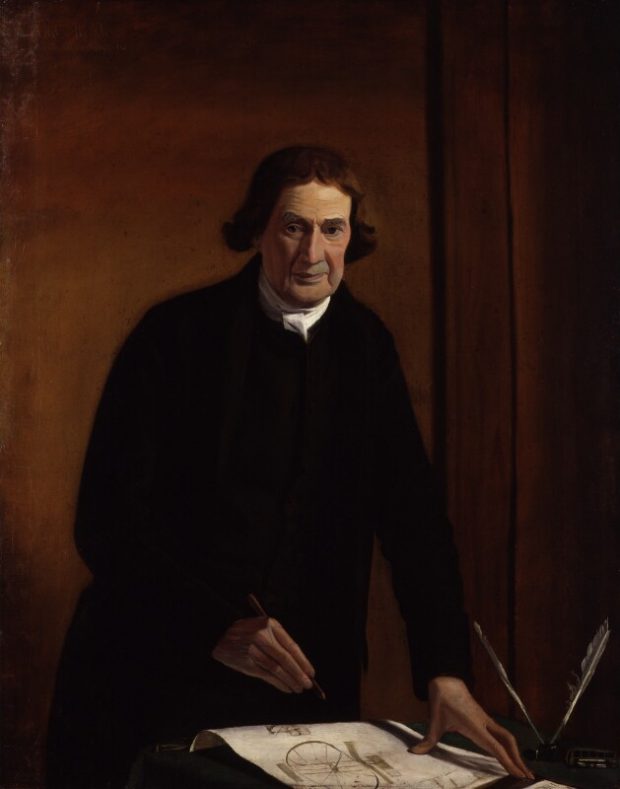Threshing Machines
Sep 3rd, 2018 by John Houghton
The first threshing machine—used to separate the reaped grain from the chaff—had been invented in Scotland by Andrew Meikle, around 1786, and thus mechanical threshers were among the first pieces of agricultural technology to put farm laborers out of their jobs, a process which resulted in the Swing Riots of 1830 in England.
Early threshers were typically powered by horses, but threshers connected to a steam engine appeared as early as 1799 (though the horse-driven engraving below dates to 1881). Threshers driven by a steam traction engine were common in northern Indiana by 1845. Individual farmers didn’t necessarily own the machines, whether horse-or steam-powered: rather, the owner, with a few specialists, would travel from farm to farm, and neighboring farmers would work together to fill the less-skilled jobs, resulting in a “threshing crew” of 8-14. Farm wives well into the 1960s might refer to preparing a large meal as “cooking for a threshing crew.”
Andrew Meikle by A. Reddock, oil on canvas, 1811,
National Portrait Gallery 5001,
(c) National Portrait Gallery, used by permission.
Horse powered thresher,
https://en.wikipedia.org/wiki/Threshing_machine#/media/File:Batteuse_1881.jpg
Threshing machine powered by a steam traction engine
at the Weald and Downland Museum.
https://www.flickr.com/photos/anguskirk/4007578105
Reproduced under Creative Commons license.




